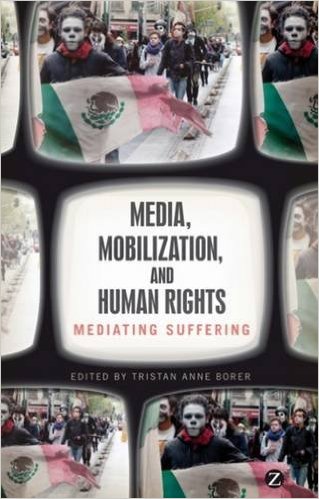Insightful articles examine media’s attempts to inform the world about suffering
By Susan S. Novak
SUNY Potsdam
Student newspaper advisers and journalism teachers know the difficulties of helping young reporters understand the nuances of objectivity and bias, false balance and fair reporting. We ask such questions as: Do we know our audiences? Are we framing? Employing a U.S.-centric or regional slant? Supporting only one side?

Advocacy creep into news reporting is concerning, but in some stories, a degree of advocacy may have a legitimate place. Even some well-known reporters have argued the point: In a 1996 article about the Bosnian War coverage, Sherry Ricchiardi quotes CNN’s Christiane Amanpour as saying, “”In certain situations, the classic definition of objectivity can mean neutrality, and neutrality can mean you are an accomplice to all sorts of evil. In this case, genocide and crimes against humanity,” and Bob Steele of the Poynter Institute as suggesting that in this war, “presenting the other side in the interest of neutral reporting is ‘simple-minded.’”1 (26)
Human suffering is an area of coverage that reporters should consider carefully, and this is the focus of Tristan Anne Borer’s 2012 volume Media, Mobilization, and Human Rights: Mediating Suffering.
Writers who deal with genocide, starvation, disease or war victims likely cannot ignore their natural human empathy, and they do want to feel they are making a difference with their writing; decent humans naturally strive to end suffering. After all, as Borer notes in her introduction, “One of the central tenets of the human rights advocacy movement is the belief that information about human rights abuses leads to action to halt them.”
But the process of choosing and attacking stories, and following what happens after we publish them, is seldom clear-cut. Media specialists of all stripes must consider whether their words really effect changes in their readers that can result in action, or whether repeated coverage desensitizes readers or pushes them to hopelessness. In addition, people might already be primed to respond in specific ways to certain media stories they consume.
Borer’s edited volume provides a deeply insightful and broad-ranging collection of articles that examine just such questions about the media’s attempts to inform the world about suffering and the tactics these media use to direct our focus and emotions toward enacting change or possibly pushing a political agenda.
David Kieran begins the discussion by examining the U.S.’s 1993 humanitarian crisis intervention in Somalia. He argues that media sometimes connect current to previous historic events in ways that influence how readers respond to new situations. During the 1990s, he says, “Americans routinely encountered opposition to human rights wars that persistently yoked Somalia and Vietnam together,” and that “they also read important and bestselling popular texts about both the Vietnam War and the Somalia intervention.” The popular literature about Somalia, he says, “appropriated and redeployed the tropes and dominant discourses of the Vietnam texts that had preceded it a few years earlier,” causing the public to reject support for the current crisis.
Michael Galchinsky’s contribution falls outside journalism, but he expands the idea of evoking empathy through global media by examining artistic literary modes and considering the desires of human rights artists, some of whom face censorship, punishment or worse for their expressions. “Those works of human rights culture that reach for the global public,” he says, “aim to inspire international outrage and intervention,” although “it is not clear that a global public exists.”
Complementing that discussion of outside pressures on creative works, Ella McPherson uses a case study of Mexican newspapers to explain how editors there employ very practical considerations when deciding whether to cover certain human rights issues. Of the available local newsworthy stories, she argues, those that best fit the framework of each newspaper’s political, social, and economic aims are the ones that will see publication.
Dan Chong, speaking for U.S. journalism, outlines five distinct framing strategies commonly used to argue social and economic rights. For human rights activists, he says, “framing strategies attempt to ‘mediate atrocity’ by making us aware of, sympathetic to, and actively engaged in the daily, and often unseen, suffering of others.”
Chong observes that “Issues also tend to gain political support when they are framed as universal moral claims rather than as the narrow desires of a particular interest group”.” This is an interesting fact in light of Galchinsky’s uncertainty about the actual existence of global publics (and hence, presumably, universal morals).
Borer moves the discussion from media framing strategies to an outline of three types of “shock” media used to attract attention to human rights abuses. Under certain circumstances, she says, shock tactics can fail, as when they exoticize the “other” or fail to acknowledge their own Western slant. She reminds readers that “When media portrayals of suffering fail to reduce the proximity between the audience and the sufferer, any proposed action to alleviate their misfortunes is less likely to follow.” (164)
Two chapters delve into Douglas Kellner’s idea of media as “spectacle.” Andrew F. Cooper and Joseph F. Turcotte discuss the use of celebrities to draw attention to special issues “to help galvanize public opinion and support.” Because celebrities do not officially represent their nations, the authors say, they can choose how to focus on their causes, sometimes with detrimental effects. For Joel R. Pruce, the interesting aspect of spectacle involves “the types and degree of engagement cultivated by the exposure to graphic imagery of suffering.” By returning us again to lack of support in the Somali crisis, he cautions that “the claim that information deficit is at the root of inaction ignores the possibility that information overload may be equally detrimental.”
Finally, Sarah Kessler observes that social media – still a relative newcomer to the advocacy game – is making some inroads but also generating forms of “support” that lead to “slacktivism.” The fact that social media are decentralizing leadership means that anyone can become an activist organization.
Overall, Borer has created an informative and well-thought-out collection that will provide all media instructors good lessons in media literacy and news judgment. The broad coverage of articles here made it an interesting and thought-provoking read.
As a newspaper adviser, I found the articles that touched on international considerations to be particularly useful for filling a weak area in many textbooks. As our students head out and begin their own careers in publishing, their words will reach increasingly diverse audiences, both nationally and internationally; however, many of them as young reporters may not have the tools in their toolkits to help them bridge social and cultural gaps. Any research we can share with them about international media issues will help illustrate that our country’s vision is not the only way of understanding the world.
In addition, this book offers valuable information for students who choose to use their journalism skills for nonprofit or human rights organizations. As governments continue to cut funding from 501(c)(3)s, those organizations will come to depend increasingly on knowledgeable writers to help them illustrate the suffering in the world and the help needed to end it.

Susan S. Novak (novakss@potsdam.edu) is an associate professor of journalism and PR at SUNY Potsdam. She has worked for more than 35 years in writing and editing positions in magazine, newspaper, and scientific organizations. Her research focuses on Russian journalism and on the problems faced by college campus newspapers run as clubs with minimal professional direction.
